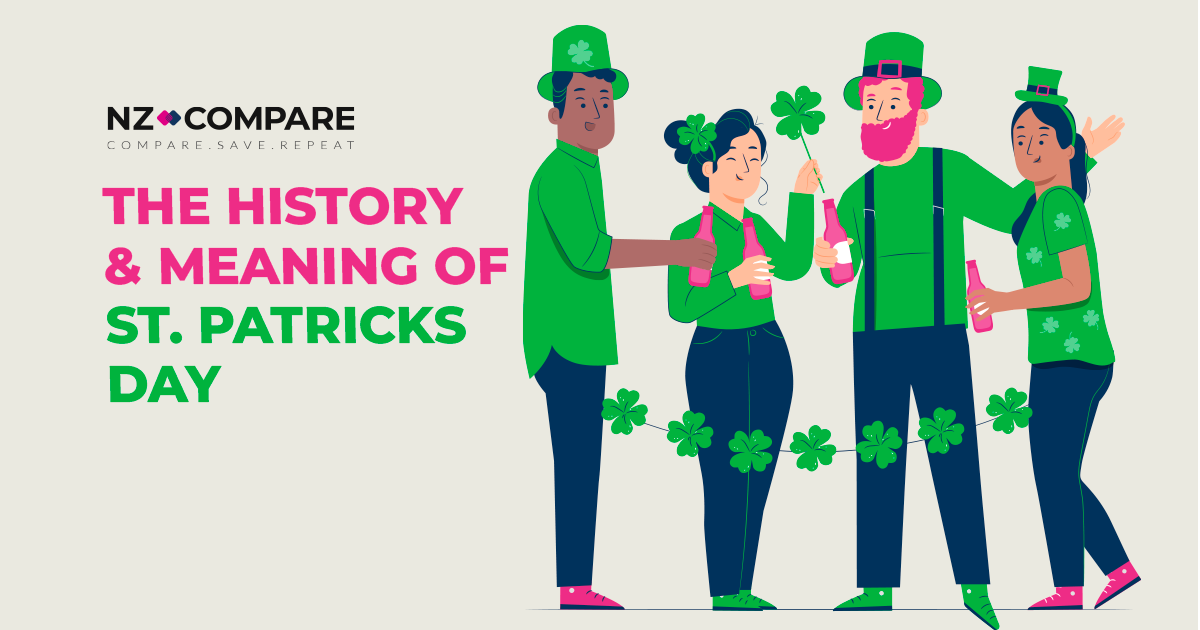St. Patrick's Day brings us the colour green and time with loved ones. But what is the meaning behind it?
St. Patrick’s Day is celebrated every year on March 17th. It is the anniversary of the death of St Patrick from the 5th century. This holiday has traditionally been celebrated in Ireland for over a thousand years. St. Patrick’s Day falls during Lent, which is christian season, traditionally spent attending morning church services. However, when the restrictions on the consumption of meat were finally waived, people began celebrating the religious holiday a little differently – with dancing and feasting. The feasts would typically involve the Irish meal of bacon and cabbage.
Who was Saint Patrick?
Saint Patrick lived during the fifth century. He is the patron saint of Ireland and its national apostle. Kidnapped from Roman Britain, Saint Patrick was brought to Ireland at just 16 years old as a slave. While he managed to escape, he returned to Ireland and was considered responsible for bringing Christianity to the people.
His death, believed to have been March 14, 461, brought about mythology and legends of his life, which has become deeply ingrained in Irish culture. One of the most famous legends is that he explained the Holy Trinity using the three leaves of the native Irish clover.
How Was St. Patrick’s Day Celebrated?
People in Ireland have been celebrating the day of feast every March 17th, Saint Patrick's Day since around the ninth or 10th century. However, the first parade of St. Patrick’s Day took place in America, not Ireland. According to records, March 17, 1601, a St. Patrick’s Day parade was performed by a Spanish colony.
Over a hundred years later, Irish soldiers, who missed home, marched through New York City on March 17, 1772 to honour Saint Patrick. From there, the excitement for parades celebrating St. Patrick's Day grew and spread in New York, Boston, and other American cities at the time.
The Colour Green and Leprechauns
Leprechauns are an iconic symbol of St. Patrick’s Day. The belief in these creatures comes from the Celtic belief in fairies – tiny men and women whose magical powers could do good or evil. In Celtic folktales, leprechauns were cranky individuals and would mend the shoes of other fairies. They were also known for being tricksters, taking advantage of this trait to protect treasure.
The colour green is also heavily associated with St. Patrick’s Day. As Irish immigrants moved throughout the United States, more traditions arose. Chicago’s yearly dying of the Chicago River is a popular tradition that began in 1962, where the city poured vegetable dye into the water to turn it green for a few hours.
Turn your budget green by comparing your bills this St. Patrick’s Day
Here at NZ Compare, we are all about helping Kiwis to make better decisions with their money, ultimately helping them to save money so that they can enjoy celebrations such as St. Patrick’s Day that little bit more. Financial stress is real and serious in this cost of living crisis, and finding tangible solutions to saving money can truly make a difference.
Our range of comparison platforms are designed to help you easily compare your household bills within just a few minutes. Compare broadband, power, mobile, and other finances such as insurances, personal loans, and mortgages. There are so many benefits to comparing, including unlocking true savings by finding yourself a better deal. Why pay more, when you can pay less and smile a little bit more this St. Patrick’s Day?
Our platforms are free to use, bias-free and hassle-free, so that you can find the best deal available to you based on your unique needs. Don’t wait to save money! Make that budget go green.



